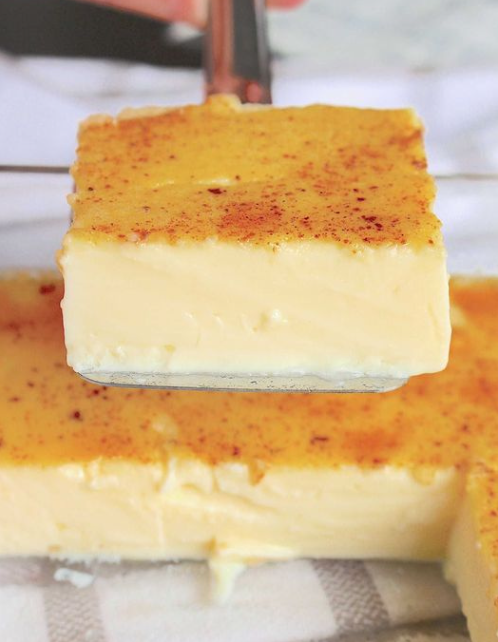-
Preheat your oven to 325°F (160°C). Place 6 ramekins or small custard cups in a large baking dish.
-
In a mixing bowl, whisk together eggs, sugar, salt, and vanilla until smooth and combined, but not foamy.
-
Warm the milk in a saucepan over medium heat until it’s hot but not boiling (about 160–170°F / 70–75°C).
-
Slowly pour the warm milk into the egg mixture while whisking gently to avoid scrambling the eggs.
-
Strain the custard mixture through a fine sieve into a large measuring cup or bowl to remove any stray egg bits for ultra-smooth results.
-
Pour the custard evenly into the ramekins. Sprinkle each with a pinch of nutmeg if desired.
-
Carefully pour hot water into the baking dish until it reaches halfway up the sides of the ramekins (creating a water bath).
-
Bake for 35–45 minutes, or until the centers are just set and jiggle slightly when shaken.
-
Remove ramekins from the water bath and let cool. Serve warm, at room temperature, or chilled.
Serving and Storage Tips
-
Serve chilled or warm, depending on preference. Dust with cinnamon or garnish with fresh berries for flair.
-
Refrigerate leftovers for up to 3–4 days. Cover with plastic wrap to prevent the surface from drying out.
-
Do not freeze—custard tends to separate and lose its texture when frozen and thawed.
Variants
-
Coconut Custard: Swap half the milk with canned coconut milk for a tropical twist.
-
Honey Custard: Replace sugar with 1/3 cup of mild honey for a natural sweetener and floral depth.
-
Lemon Zest: Add 1/2 tsp lemon zest for a refreshing citrus note.
-
Spiced Custard: Mix in a pinch of ground cardamom or cinnamon into the batter before baking.
FAQ
Q: Why is my custard watery or curdled?
A: This usually happens when the eggs are overheated. Keep the milk below boiling and bake the custard gently in a water bath to ensure even cooking.
Q: Can I use non-dairy milk?
A: Yes, but for best results, use creamier alternatives like oat milk or almond milk mixed with coconut milk. Texture and richness may vary.
Q: How can I tell when it’s done?
A: The edges will be set, but the center should jiggle slightly like gelatin. Overbaking can cause cracks or a rubbery texture.
Q: Can I make this in one large dish instead of ramekins?
A: Definitely! Use a 1.5-quart baking dish and increase baking time by 10–15 minutes. Always test for that slight jiggle in the center.
